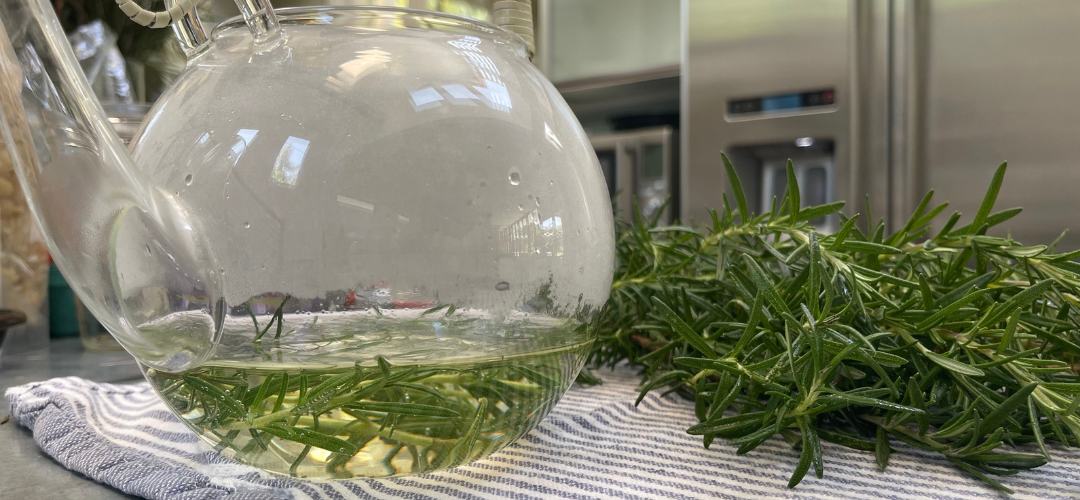There are so many good reasons to learn how to make rosemary water.
I’m going to start by saying making rosemary water is a truly enjoyable process. I love every stage of it. I enjoy starting my rosemary water on a lazy Sunday and using it throughout the week.
I assume you’re here because you’ve heard about the many health benefits of rosemary, like:
improving memory and concentration,
- boosting immunity,
- reducing stress,
- reducing inflammation,
- promoting digestion,
- . . . and the benefit that everyone’s talking about these days: promoting hair growth!
This much-loved herb has also been praised for its antibacterial, antiviral and antifungal properties.
Plus, rosemary just smells really good.
Enough preamble. Let’s get to what you’re here for: How to make rosemary water!
How to Make Rosemary Water
Stage 1: Harvest
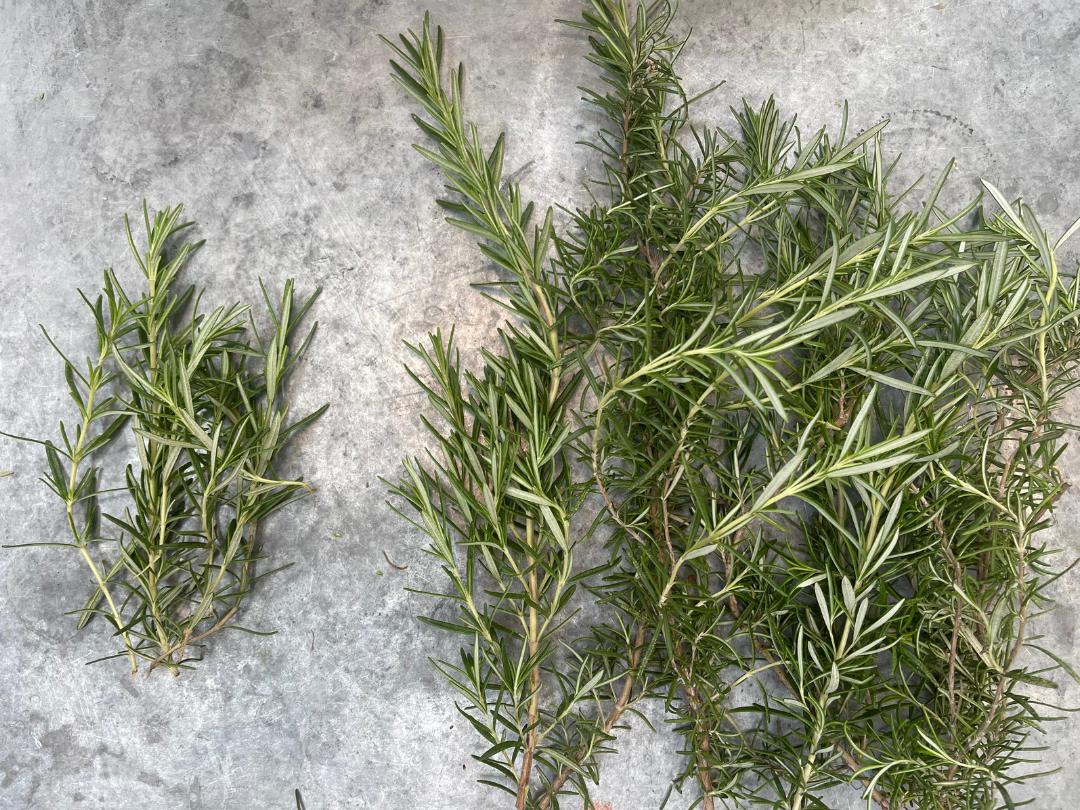
If you’re looking for instructions on how to make rosemary water using the fresh herb in your own garden, check out our rosemary guide to learn about the best type of rosemary to plant.
The process for making rosemary starts with harvesting the stems.
I’ll pick about 10 sprigs, anywhere from 6” to 8” long, along with a few small new growth pieces.
When you pick the stems you should think about adding to the beauty of the plant, not distracting from it by harvesting big chunks from the same place. You don’t want it to look like someone took a bite out of it. Because I’m not looking for the lovely straight pieces I may want for other purposes, I look around for the stray pieces, which are usually around the base of the plant.
I place the stems in a colander and rinse them off.
I also take a moment to admire my gift from the garden.
Don’t have a garden? Don’t fret!
You can buy rosemary, fresh or dried, at a grocery store or online. You can also buy rosemary tea and still follow many of these steps on how to make rosemary water.
Stage 2: Rosemary Tea
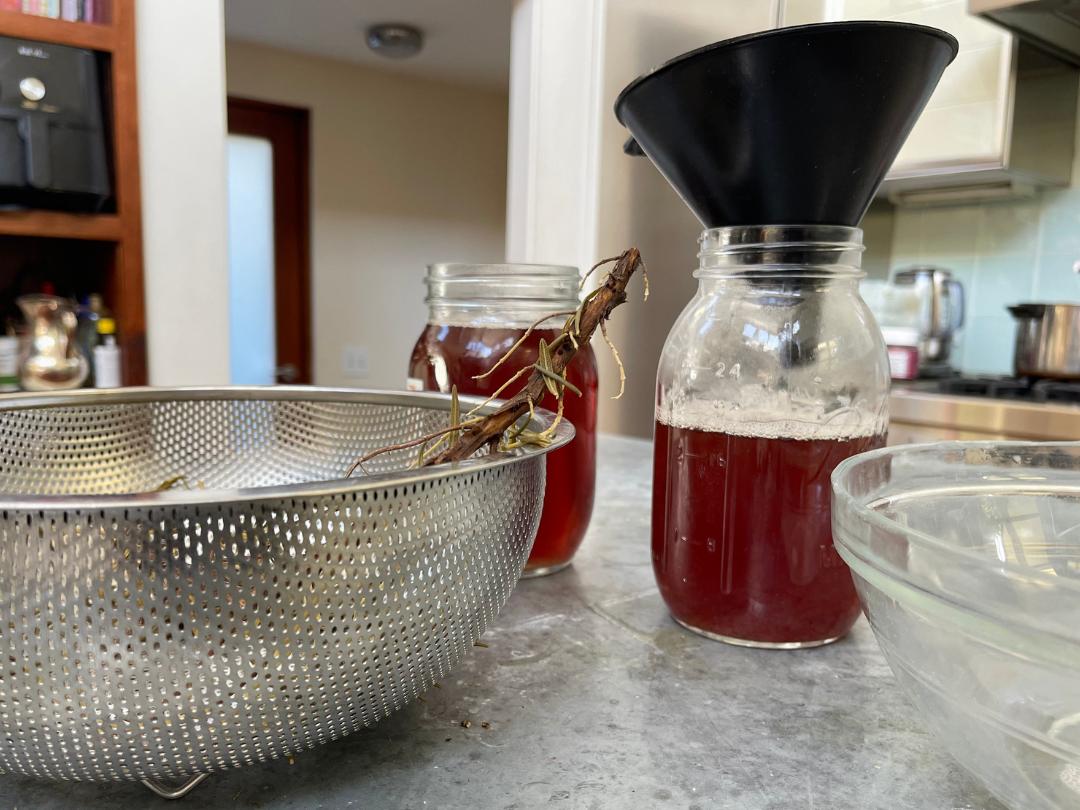
I’ll take the youngest pieces of rosemary and make an herbal tea, or tisane. You can also just cut off some of the tops of your larger pieces.
There are numerous health reasons to enjoy rosemary tea, one being that it is said to calm the nerves. The act alone reminds me to take a moment and relax.
To make the rosemary tea place about three short and fresh stems of your rinsed rosemary into a teapot. Then add hot water (about 170 F – NOT boiling water) to the teapot.
Then let it sit. I prefer a very mild rosemary tea, so I will pour the tea into a cup when I see the color changing in the teapot (usually about three minutes).
If you let it steep too long, the taste will be bitter. However, if you are using older pieces of rosemary, you may have to either use more pieces or let the tea steep longer.
Because I use small whole pieces of the stem there is no need to strain.
Be careful not to drink too much rosemary! It is also said that ingesting large amounts of rosemary can have the opposite effect and irritate the stomach.
You can flavor the tea with lemon, cinnamon, or honey.
You can also use a chicken or vegetable broth instead of plain water for a heartier tisane.
You can also use the light tea to make delicious ice cubes for lemonade!
Stage 3: Potpourri
To make the rosemary water you just need:
- A few hours of time
- Some rosemary sprigs
- A pan
- Water
- A straining system
- (Optional) A spray bottle to fill up
Place your rinsed rosemary in a pot of water.
For 10 pretty hardy stems of rosemary 6” rosemary, or the equivalent, I add about 14 cups of water. Adding this much water helps avoid the problem of boiling down the water too far and burning the pan. And it produces a nice aromatic simmer.
Boil the water, then turn down to simmer the rosemary for 20 minutes to 2 hours.
Basically, you want to steep it until it’s at your desired strength.
This process will scent your kitchen with rosemary – a true potpourri!
So, now I have my rosemary tea and the lovely smell of rosemary wafting through the air.
Stage 4: The Facial
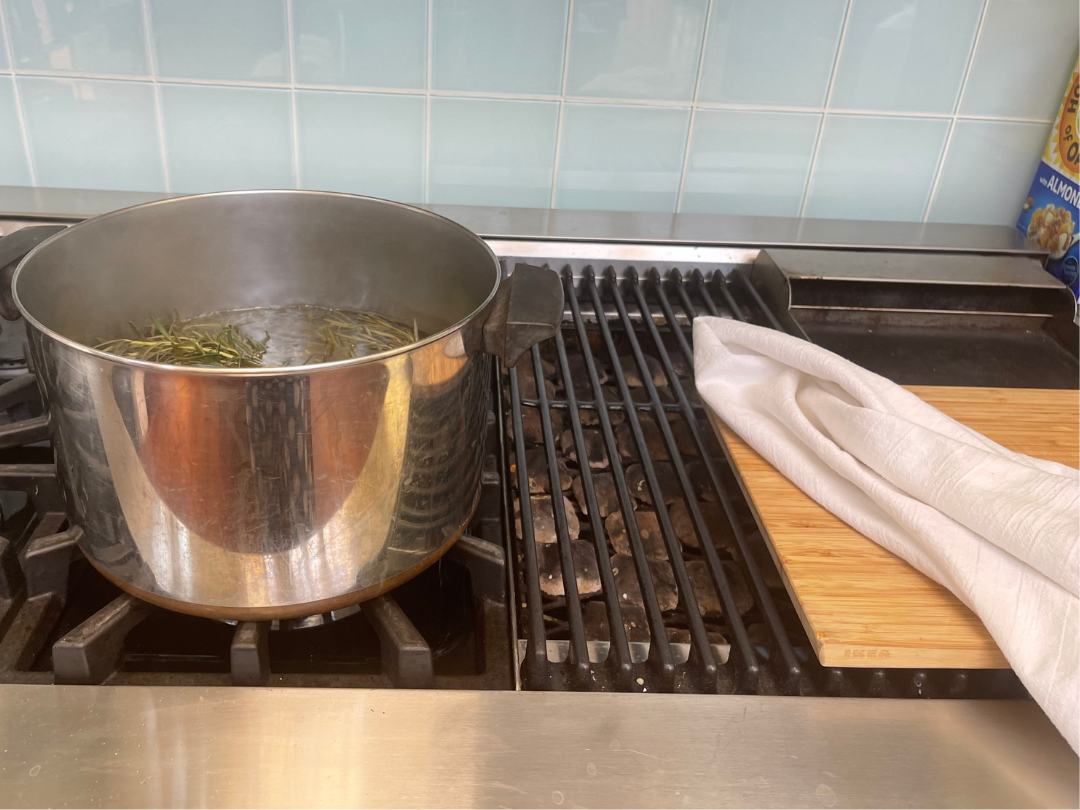
You can also take a mini-facial
This is not a mandatory step in my “how to make rosemary water” instructions, of course. But I highly recommend it.
I keep a tea towel beside the simmering rosemary to remind me to take a moment and steam my face.
You just need to place the towel over your head and catch the steam rising from the pot. I’ll do this maybe five times while the rosemary water is gently simmering.
If you don’t feel comfortable or safe leaning over your stove, move the pot to a safer place for your face steaming.
Stage 5: Rosemary Water
I always simmer my rosemary for the full two hours — both to enjoy the potpourri and my mini-facials, and because it gives me the strength of rosemary water I like.
I’ll even let the rosemary steep a bit more as it cools.
Remember, we are not making a tea to drink, but rather dark, rich rosemary water.
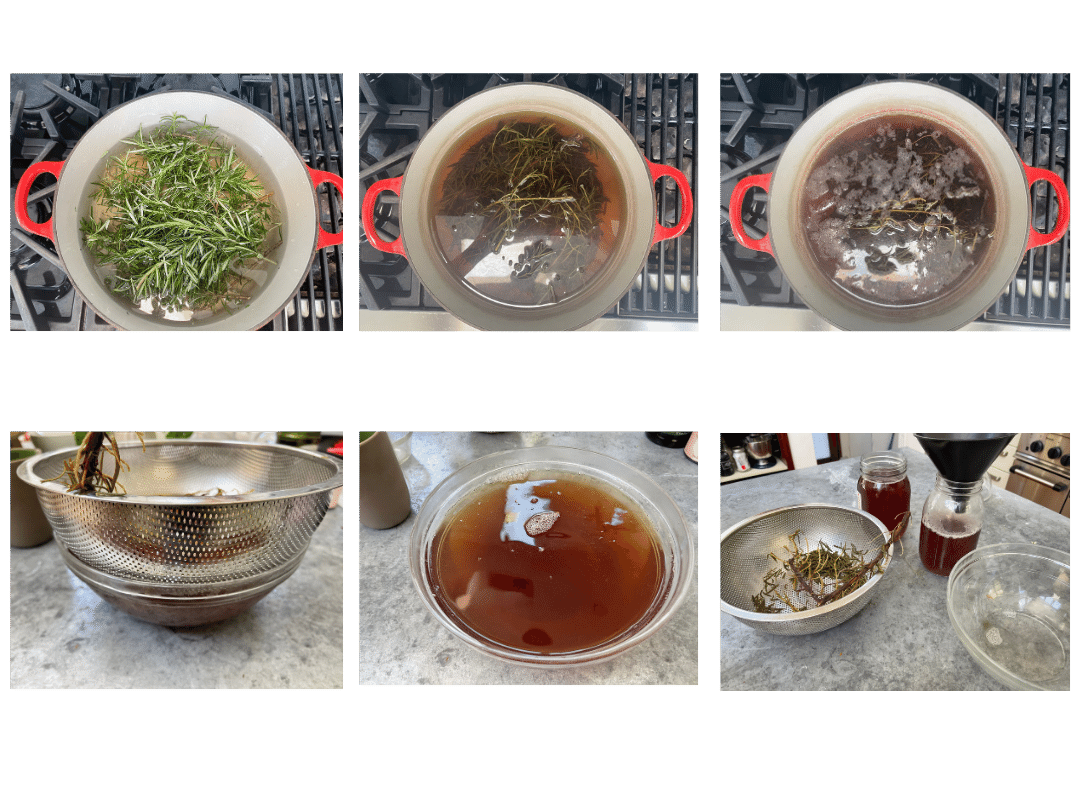
When your rosemary water is where you want it, you’ll need to strain this mixture until you are left with just the rosemary water.
Next, pour the rosemary water into a jar or spray bottle. I like to pour mine into a jar and keep it in the refrigerator. Refrigerating helps the rosemary water last longer — up to a week or two.
My Favorite Uses for Rosemary Water
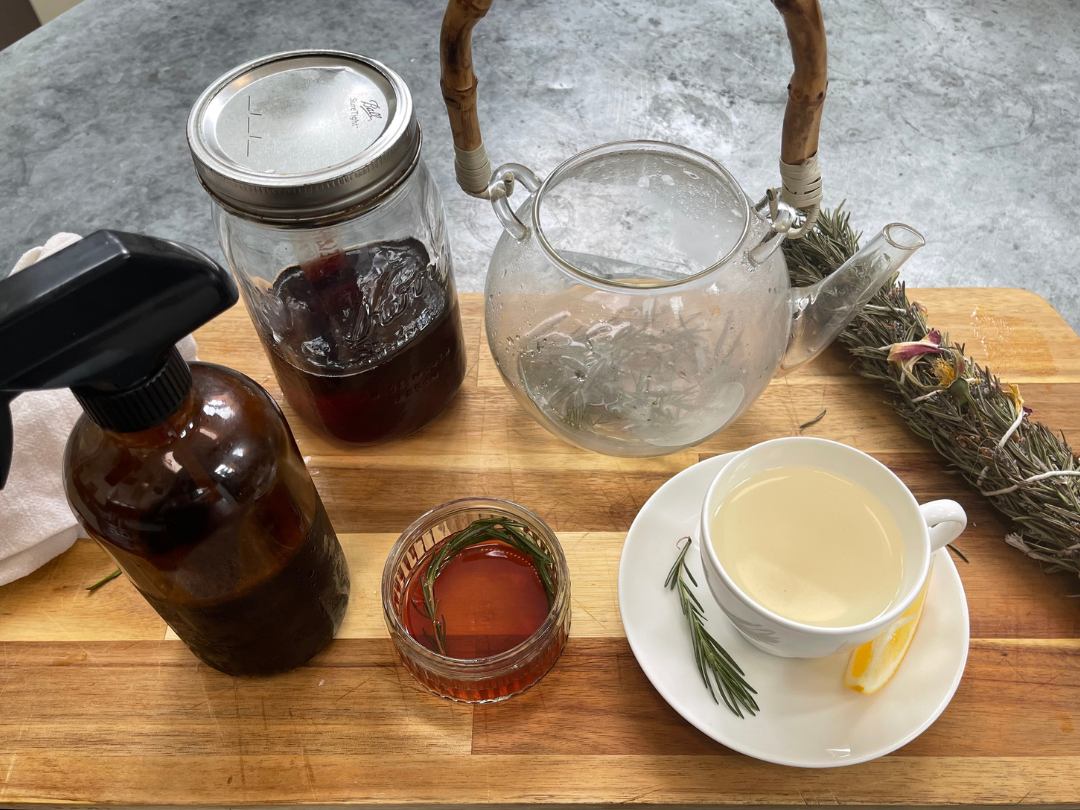
→Rosemary Water for Your Face
I will pour some of the rosemary water in a small cup in the morning and then dip a small cloth in the water and dab it on the front and back of my neck, my forehead, face and, if I’m not going out, to my scalp. I will do this through the morning as I work. I find it both relaxes and invigorates me. The perfect combination to power through.
The rosemary compress is also supposed to be helpful for headaches.
→Rosemary Water for Your Hair
There are so many benefits to using rosemary water on your hair! Rosemary water is said to stimulate hair growth and hair thickening and to reduce hair loss. The anti-inflammatory property of rosemary helps promote circulation in your scalp and rosemary water is a very gentle way of applying it. You can do this numerous times a day with your spray bottle.
→Rosemary Water to Repel Insects
By the end of the week I move my rosemary out of the refrigerator to make room for a new fresh batch. I’ll sometimes move the mason jar to my closet for some extra moth repellent.
Pouring the rosemary water in a spray bottle will also create a simple and natural insect repellent.
→Rosemary Water for Your Bath
Rosemary water is a great addition to your bath, adding aroma as well as giving the water a more luxurious feel. We will often create a stew of sorts in our tub, adding our rosemary water and then mixing in other essential oils. This is the lovely end to our week of rosemary rituals!
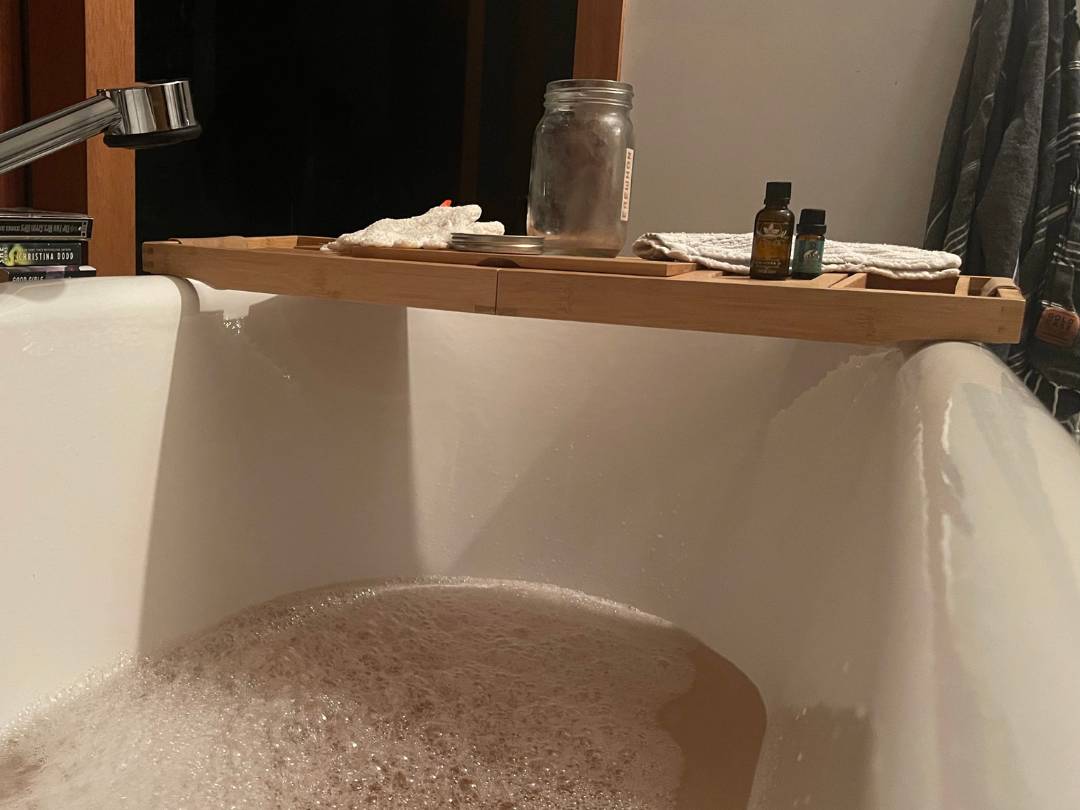
A Few Goods I Recommend
Check out this lovely rosemary tea from Buddha Teas.
A hot water tea kettle where you can read the temperature comes in handy when you are making your tisanes. I’ve had the Breville electric kettle for years. I like that it lets me choose the exact temperature of the water for my needs as well as its ability to make and keep a pot of tea warm if needed.
A teapot where you can see what’s going on is key to the perfect cup of tea. Design Within Reach carries a pricey but beautiful option, the Paola C Teapot.
For a more affordable option, there is a simpler glass teapot available on Amazon.
Want to make a rosemary treat? Grab Alice Waters’ brilliant cookbook, which includes a simple and delicious fried rosemary recipe. (You can also sign up for the Alice Waters’ brilliant Master Class program.)
To learn more ways to use rosemary, grab this free list: 101 Uses for Rosemary.
We partner with select companies whose products and/or services we love. Some of the links on this page may be affiliate links. If you purchase an item using our affiliate link, we may receive a small commission (at no added cost to you). We appreciate your support.

